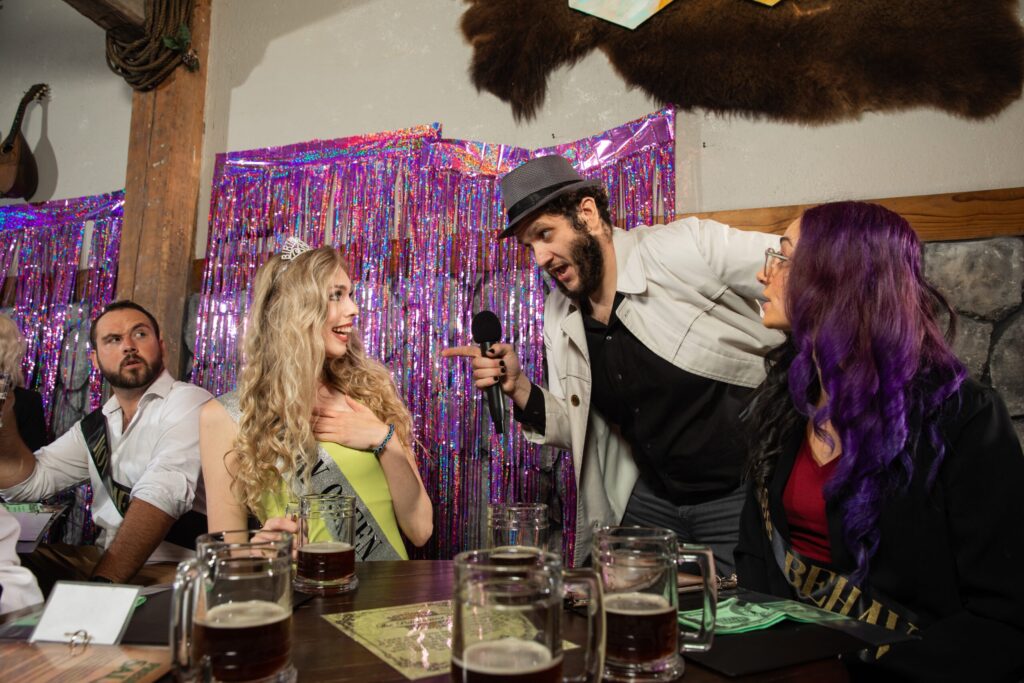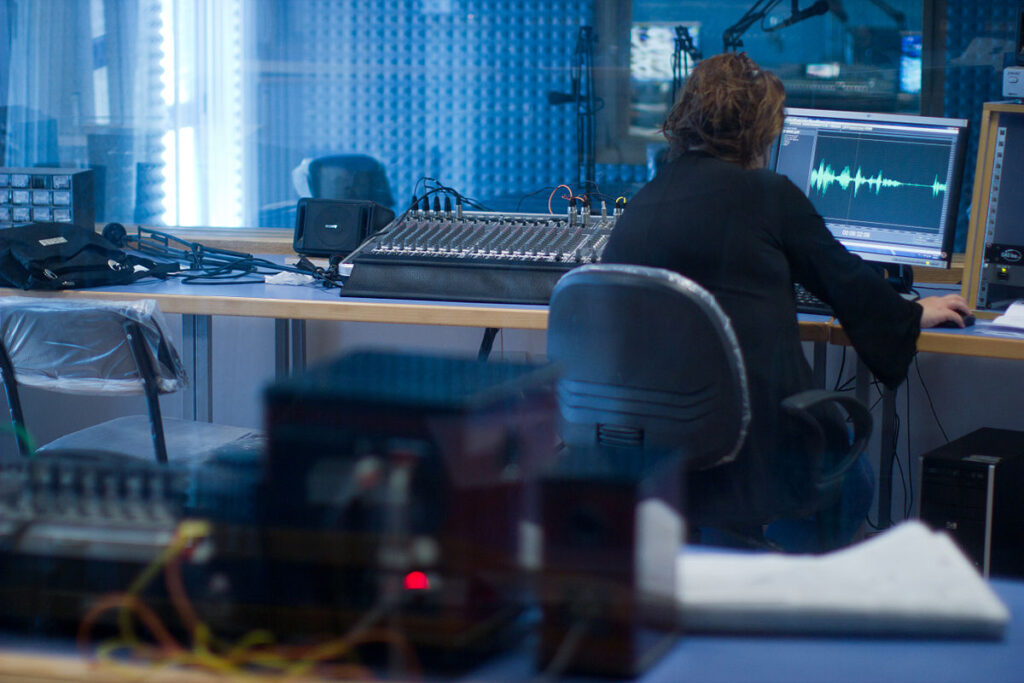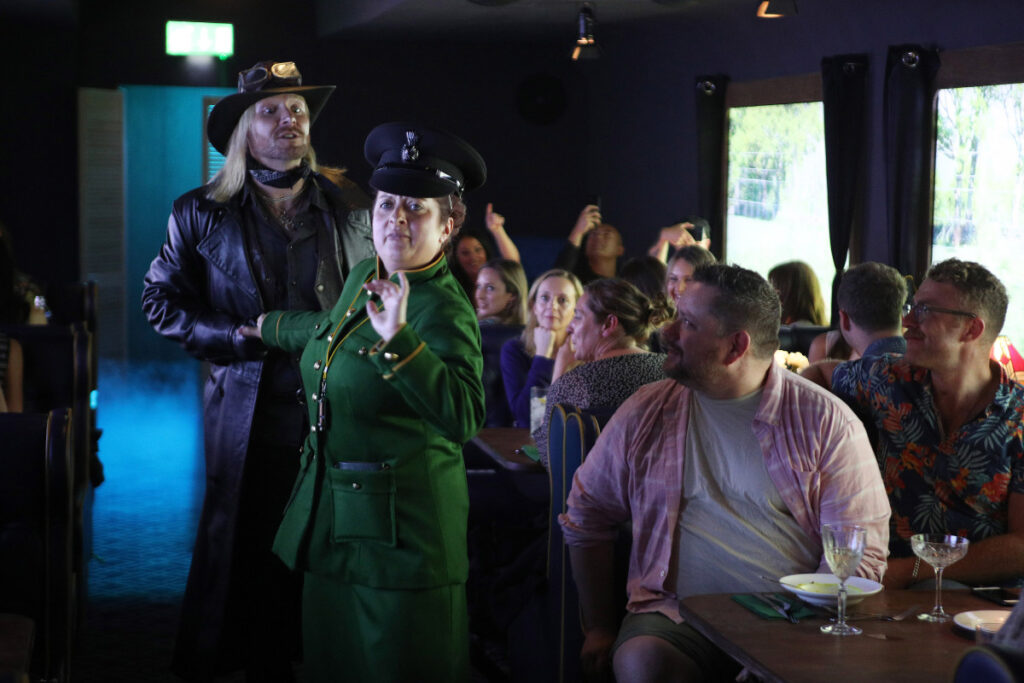Immersive experiences, especially in murder mysteries, have the unique ability to grip audiences, conjuring up an atmosphere thick with intrigue and suspense. Sound and music play critical roles in this engagement process, setting the tone for the unfolding narrative, intensifying moments of drama, or alternatively, providing respite from the mounting tension.
They can stir emotions, evoke particular reactions, and subtly guide the perceptions of listeners, greatly enhancing an immersive murder mystery experience.
Sound doesn’t merely add life to a silent world, it builds, structures, and populates it. With the right sound effects, you can recreate life-like scenarios, drawing out the intrigue, the suspense, the lurking danger and the rush of adrenaline that is characteristic of murder mysteries.
Similarly, with the right musical score, you can keep your audience on edge, build expectation, and paint vivid, memorable images.
This article will explore the roles of sound and music, their importance, and how to effectively incorporate them in your murder mystery narrative.
Sound Effects in Creating Realism

Sound effects deliver an unmistakable sense of realism into every murder mystery experience. If you are attending a murder mystery weekend event and while investigating, you see a character suddenly reacting to an off-scene crash that you can’t hear, it would break the sense of reality and potentially spoil the immersive experience.
Sharp, realistic sound effects, be it a thunderclap, a scream, or the eerie creak of an opening door, can not only enhance the drama, but also anchor the scene in a tactile reality.
Sound effects can be manipulated to create specific moods and effects beyond mere realism. For instance, the exaggerated creak of a wooden floor or the dramatic echo of footsteps down a hall might not be completely realistic but are effective at inducing suspense.
The crackle of a fire, the ticking of a clock, or the distant hoot of an owl can subtly set up anticipation or fear. Even though they are simple amplifications or distortions of everyday sounds, their careful usage in a murder mystery experience can elevate the entire narrative, making it more gripping and engaging for the audience.
Selecting the Right Music
Selecting the right music for a murder mystery can be a challenging yet rewarding endeavor. There are numerous elements that need to be considered. The plot, setting, era, and atmosphere all influence this musical choice.
For instance, a 1920s-themed murder mystery might be best complemented by jazz or blues to evoke the period, while a modern-day narrative might be geared better towards ambient or electronic music.
Consequently, understanding the story and its various facets is essential in determining the best match when selecting the soundtrack to your narrative.
Considering the genre, instruments, tempo, and rhythm are also essential components to choosing the right music. Sudden tempo changes can signal dramatic shifts in the story, introducing new characters or plot twists.
Different instruments can convey varying emotions. For example, a lone, muffled trumpet can induce suspicion while tense strings can echo with paranoia. Some may also opt to incorporate silence as a powerful musical tool, using it to punctuate certain moments and increase suspense.
It’s a balance of key musical elements that can significantly enhance the tension and suspense of a murder mystery, leaving your audience gripped with anticipation.

Crafting the Perfect Sound Effects
Choosing the right sound effects for different scenes in your murder mystery narrative boils down to a deep understanding of the story and its characters. A creaking door or flickering light bulb may seem insignificant, but when placed in the right context, it signifies a haunting atmosphere and creates tension.
At the same time, the noise of a bustling city or rowdy crowd can create a feeling of chaos, making the listener feel like they are indeed part of the narrative. Hence, it is imperative to focus on every auditory detail to ensure a fully immersive experience.
The process of creating sound effects can be as gratifying as it is challenging. There are two primary options: creating your unique sounds or buying. The former offers an enhanced level of customization and originality, which can be rewarding.
This involves recording sounds, either in a controlled studio environment or field recordings, and then manipulating them to fit the narrative. Buying sound effects, on the other hand, offers convenience and variety, but may lack personalization.
Websites provide extensive libraries of high-quality sounds that can be used straightaway or slightly tweaked to fit the narrative. The choice between these two options all boils down to your project’s time constraints, budget, and ultimate vision.
Collaboration with Sound Professionals
Collaborating with sound professionals, including composers, sound designers, and audio engineers, can significantly enhance the auditory experience of murder mystery events.
These experts bring a wealth of creativity and technical skill, ensuring that the sound and music perfectly complement the narrative and setting of the event.
A bespoke audio landscape not only adds depth and realism but also aids in building suspense and guiding the participant’s emotional journey throughout the mystery.
By working with professionals, event organizers can create a rich, immersive environment that captivates participants, making the storyline more engaging and memorable.
The expertise of sound professionals ensures that every auditory element is meticulously crafted and tailored to the event’s specific needs, from subtle background music that sets the tone to sound effects that cue crucial plot developments.
This collaboration results in a polished and cohesive audio experience that significantly elevates the overall immersion and enjoyment for participants.

Accessibility Considerations
Ensuring accessibility in the sound design of murder mystery events is crucial for inclusive participation. It involves thoughtful selection of sound effects and music and the provision of alternative formats for those with hearing impairments.
Providing subtitles or transcripts for audio elements allows participants who are deaf or hard of hearing to fully engage with the story and clues. Additionally, considering the clarity and volume of sounds can help in making the event more accessible to individuals with varying degrees of hearing ability.
Implementing these accessibility measures ensures that the immersive experience is enjoyable and engaging for everyone, regardless of hearing capacity.
By prioritizing accessibility, organizers demonstrate a commitment to inclusivity, ensuring that all participants can delve into the mystery and contribute to solving the puzzle.
This approach not only broadens the event’s appeal but also enriches the experience by fostering a diverse and inclusive environment where everyone’s participation is valued.
Conclusion

Sound and music play critical roles in creating an immersive and engaging murder mystery experience.
By understanding all the factors involved and making the right choices, you can influence audience emotions and heighten the sense of realism in the narrative.

